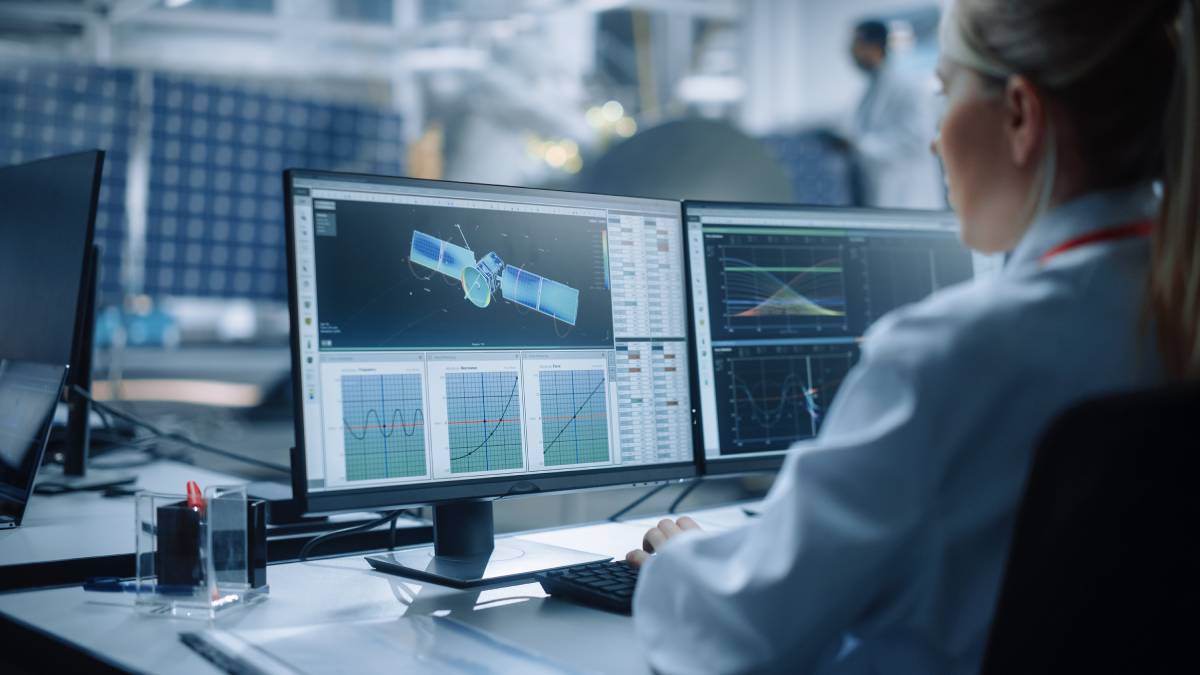
Constellations spoke with Colonel Kalliroi Landry of the Space Development Agency (SDA), where she oversees planning, acquisition and fielding of launch, ground and user terminal systems. The discussion included exciting new tech like the Tranche satellite program, the role of disruption in technology development and commercial acquisition programs for the Space Force.
Antennas, Constellations, and More
The SDA is looking for significant new tech in all areas of the space and satellite industries, such as ground segment capabilities. “As the lead for all the ground segment activities, I am looking at how am I putting ground entry points around the globe in order to communicate with our proliferated constellations.” Many problems arise from lack of context and information on the ground, urging the warfighter to increase the number of ground antennas. Parabolic antennas, for example, only get one contact per satellite to the ground per antenna.
“What I am looking forward to seeing is the maturation of phased array antennas that could have multiple contacts per ground terminal and multiple satellite contacts per ground terminal.” Solutions include cost-effective solutions that lead to fewer terminals on the ground while still delivering capability for the operational RF spectrum bands.
The SDA launches new capabilities every two years in spiral acquisition process. This fall, the Tranche 1 satellite constellation is scheduled for an initial launch of 150 satellites. This will be followed by Tranche 2 in fall 2026 with a further three hundred satellites, followed by several more generational launches. Eventually, the Tranche constellation will reach a steady state of 500 satellites in a proliferated constellation.
Working with the SDA
In approaching commercial source selection, “the intent is to compete every Tranche that we put out and have as much competition as possible,” says Landry, emphasizing that this allows for transparency in the solicitation process, keeps the industry robust, and opens opportunities for multiple players to work with the SDA. The warfighter integration council meets twice a year, where the SDA hears “directly from the warfighters, what are their current challenges, what are they struggling with in order to meet their mission objectives… it’s coming straight from the horse’s mouth.”
In working with industry, the “SDA is looking at taking capabilities and technologies that are already mature and integrating them into a solution for the military,” says Landry. Working with industry allows the military to take advantage of the work of commercial companies, including “burning down the risk, taking care of that non-recurring engineering, and reducing cost and schedule risk.”
Industry can pull capabilities more quickly and deliver on a prioritized schedule. “Commercials can develop a marketplace that can keep the costs down and keep things consistent with competition in the marketplace.” For those in industry interested in working with the SDA, Landry states that “we also publish a technology roadmap on our website, which allows us to telegraph to the industry what the demand signal is.”
In acquiring new commercial partners, the SDA “source selection process is really the same as any other defense acquisition solicitation,” including a significant focus on listening to industry. “It’s not just a tight small group from SDA, we really do branch out to bring in some subject matter experts to help us make some really good decisions,” says Landry.
Acquisition Processes: “War does not wait for the ideal solution”
According to Landry, the Space Force hopes to address obstacles in previous acquisition processes. “Looking at legacy acquisition, and oversight processes,” she says, “they kind of get mired in reviews and oversight.” The SDA hopes to make the whole process of acquisition faster and more efficient in order to get the tech to the endpoint sooner. “We are looking at the tools available through this defense acquisition process and utilizing that to deliver capability to the warfighter faster,” she says.
She encourages commercial customers to work through the correct channels, while also getting creative in how they tackle technical challenges. “There are tools out there to use… looking at those other methods really can disrupt the normal way of doing things.”
Disruption is a vital part of the acquisition process, as it allows the market to be shaken up and encourages competitors to press forward and find creative solutions, while still remaining inside the rule book. “There are ways to make it through our acquisition processes and approvals,” Landry says, addressing those who are concerned about the complexity and long timelines of government acquisition programs.
Landry emphasizes cost, schedule and performance as the most important aspects of tech acquisition. “SDA has chosen to prioritize schedule above cost and performance so that we can get that capability to the warfighter on a relevant timeline,” she says. “War does not wait for the ideal solution to be delivered.”
To learn more about constructive disruption, Link 16 and the spiral development acquisition process, listen to the full podcast episode here.
Explore More:
Podcast: Intentional Collaboration, Asking the Right Questions and Turning the Ship Around
Why the US Army is Pursuing Software-Defined, Multi-Orbit MILSATCOM
US Space Force Updating Testing, Simulators for a Contested Domain
Space Force Outlines 4 Criteria for Commercial Space Technology
